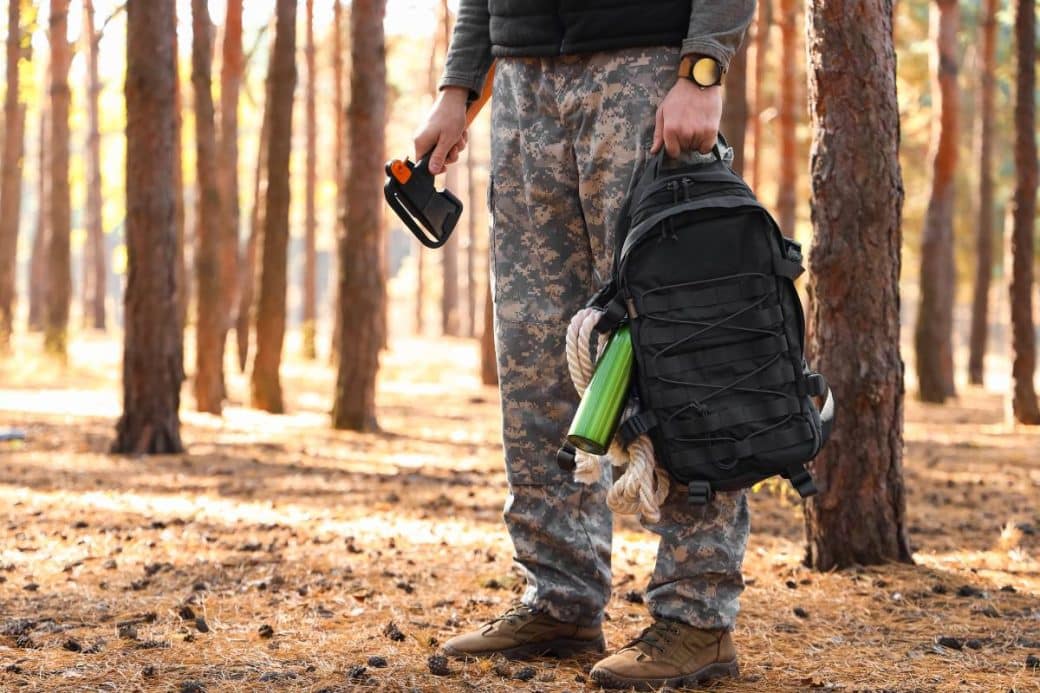Ever wondered how to stay alive in rigorous situations with only your wits to rely on?
Once vital for our ancestors, survival skills have now become a fascinating realm of knowledge for outdoors enthusiasts and adventurers. Survival strategies may save lives, but knowing how to survive outdoors or in emergencies is more important than ever.

This article is a guide to the essential terms and ideas you need to know if you ever find yourself in a tough situation. We’ve broken the information into clear sections, each explaining critical survival skills simply and directly.
Read every term. Each could be your potential life-saving grace in challenging situations.
Glossary of Unfamiliar Terms for Survival Skills
We live in a world that is both beautiful and unpredictable. The skills required to survive in an ever-changing environment are as old as humanity.
Survival skills have an extensive list of terms, from making shelter to finding food. This A-Z guide helps you learn important survival words that could help you in an emergency.
Watch this video for setting the easiest primitive deadfall trap:
| Terms | Definition | |
| A | A-frame Shelter | An A-frame shelter is an innovative and robust type of outdoor shelter. The shelter forms the letter ‘A’ and is made from branches or sometimes a tarp.
It stands strong against the elements and wild animals, conserving precious body heat. This shelter offers sanctuary and safety. Mastering the construction of an A-frame shelter can be life-saving. |
| B | Batoning | Batoning is a skill where you use a baton to split wood with an axe, making smaller pieces safely and precisely. It’s essential for creating kindling or tools and shows how to work smarter in the wilderness. |
| C | Cache Pit | A cache pit is an underground space that serves as a storage to hide supplies for future use. These underground stashes protect supplies from the weather and theft. Building this storage pit is a valuable survival skill for keeping valuable items safe and survival kits until needed. |
| D | Deadfall Trap | The set-up of a deadfall trap is often used to snare small game for sustenance, and this traditional device uses weight to capture prey, which is triggered by a meticulously crafted mechanism. Understanding its configuration is crucial for anyone relying on the land’s bounty, transforming patience and a simple set-up into a potential meal. |
| E | Evacuation Kit | A pre-packed set of items essential for survival in the event of an evacuation. Kits typically include food, water, first-aid supplies, and other necessities for sustaining health and safety during displacement. |
| F | Fire Plough | When there are no matches, the fire plough shows how clever our ancestors were in making fire. This old way of making fire by rubbing sticks together requires skill and effort. Practice can give you warmth, light, and hope, especially in wilderness survival situations. |
| G | Gaiters | Gaiters are protective wraps for our legs and boots in rough areas, keeping us dry and safe from bites or scratches. They’re essential for walking through rugged terrain and are a critical aspect of survival: Mobility. |
| I | Instep Cut | The instep cut is a careful way to use a knife in bushcraft, curving the knife away from you to shape wood. It’s important for tasks like making thin wood shavings for fire. This skill shows the need for sharper tools and sharper wits. |
| L | Lifeline Throwing | A rescue technique that involves throwing a rope or lifeline to someone in distress in the water. This skill is essential in wilderness survival scenarios and urban disaster response, especially during floods. |
| M | Morse Code | Morse Code uses dots and dashes to transmit text as on-off tones, lights, or clicks.
It’s useful for signaling in rescue situations and communication when modern methods fail, highlighting the importance of being prepared for emergencies. |
| N | Navigation by the Stars | Navigation by the stars is both beautiful and valuable. Reading the night sky’s configurations helps people find north and get their bearings, an ancient survival skill.
The stars have helped many people find their way home and still do for those who understand how to read them. |
| O | Organic Distress Markers | Making a distress signal with natural materials is clever. You can use rocks to make symbols or smoke signals with a fire. These signals can help rescuers find you. Knowing how to make organic distress signals is a key survival skill—it’s about using what’s around you to get help. |
| R | Rationing | Rationing is a planning skill; it is how you carefully manage your supplies in an emergency so they last longer.
When you have limited supplies and don’t know when you’ll get more, consuming them carefully can make a difference. Whether you’re in the wild or after a city disaster, rationing must be learned. |
| S | Survival Knots | Knowing how to tie survival knots is essential in the wild. The right knot can build a shelter, keep food safe from animals, or help rescue someone. Every knot is important for safety and shows that every detail matters in survival. |
| T | Tourniquet | In dire circumstances of severe bleeding, applying a tourniquet can turn the tide of survival. Part of a proficient first-aid response, this constrictive band can halt blood flow to a wound, buying precious time for medical aid if administered correctly. |
| U | Urban Foraging | Identifying edible foods through plants amidst cityscapes provides sustenance and a direct connection to the natural world, even within an urban environment. Foragers use survival skills in the city, mixing old and new ways of living. |
| X | X-Markings | In survival situations, X-markings are like simple GPS points. They can show where you’ve been, signal for help, or mark safe paths.
These marks on the ground or trees act as a particular language, helping with directions and communication when you can’t use words. |
| Z | Zone of Saturation | In searching for water, finding the Zone of Saturation is key. This is the layer underground filled with water.
Wells get water from here, which is crucial for survival. Knowing where this zone is can supply you in days without water. |

Conclusions
Survival skills will surely help us stay alive in challenging outdoor situations or disasters. Knowing how to find shelter, clean drinking water, and food is essential. These skills can mean the difference between life and death since we can’t last long without water or food.
Cultivating these survival skills and having the appropriate tools on hand empowers people to endure extended periods of potential survival situations with greater confidence, increasing their chances of a timely and safe return.


